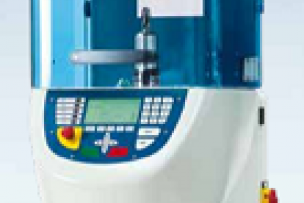Cutting wheels are a cost of doing business in tube and pipe welding operations. But the lowest-cost wheels are not always the best option.
Consider that even a 30-second wheel change can be costly when it involves a walk to the tool crib. Time studies have shown that each wheel change can cost a company from 30 to 40 minutes of productivity. If an operator changes wheels four times a day, that’s 30 percent of his or her shift lost to downtime. When factoring that in, cheaper wheels may turn out to be more expensive.
Productivity isn’t the only question. Failing to select the right wheel for a tube or pipe welding job can also result in using more filler metals — often the most expensive consumable in the operation — to make a quality weld. The wrong wheel may even lead to rework. All that hits the bottom line.
In any pipe welding application, the key is to avoid uneven or wide joints and achieve a smooth cut.
How Do You Select the Cutting Wheel to Minimize Downtime and Costs?
1. Choose the right wheel diameter for the tube or pipe size
Consider these common tool sizes and the recommended maximum diameter of material they can cut:
- 4.5" cutting wheel: up to ¾" pipe or tube
- 6" cutting wheel: up to 2½" pipe or tube
- 7" cutting wheel: up to 3" pipe or tube
- 9" cutting wheel: up to 3½" pipe or tube
Choose a wheel diameter that will cut straight through the tube or pipe’s diameter to produce the most even cut line and weld seam. That will save you on filler metal and rework down the line. Also choose the thinnest possible wheel to minimize heat and friction, the two biggest enemies of long wheel life. The most common cutting wheel is the .045" labeled thickness, but there is a new trend toward thinner 1MM thin cutting wheels that no longer sacrifice life.
A Type 1 (flat cutting wheel) is recommended compared to a Type 27 (depressed center) when cutting tube and pipe unless there is an existing constraint associated with the application. You don’t need to worry about cutting into the depressed center, and you get more life and depth to the cut with the same-sized wheel.
2. Match material type
What will you be cutting most often? Mild steel, chromoloy, stainless steel, titanium, Inconel, aluminum or all of the above? To cut stainless steel and aluminum — materials commonly used in medical and food service industries — choose a wheel that is contaminant-free (INOX) rated. The most critical missing component in these wheels is Iron (Fe), so residue will not cause surface rust concerns.
If you work with everything from mild steel to titanium, versatility becomes important. If you work with just a few types of metal, compare purchasing multiple products to a one-size-fits-all option.
3. Consider joint quality and throughput
To push out as much high-quality product at as little cost as possible, choose wheels that cut and prep a joint faster and more efficiently. That reduces filler metal and labor costs and allows for a strong weld later in the process.
Selecting a higher-cost ceramic wheel, for example, can cost less in the long run than choosing less expensive aluminum oxide wheels. Ceramic wheels cut much faster and last longer. Ceramic wheels also can cut almost anything efficiently, making them a better option if you work with a variety of materials.
Best Cutting Practices for Tube and Pipe
-
Let the wheel do the work. Don’t plunge the wheel all the way through the tube or pipe, and don’t push too hard on the wheel, which causes RPMs to drop. Zirconia alumina and ceramic alumina grains work best when tool speed is maintained.
-
Before starting the cut, hold the wheel next to the tube or pipe to understand better how deep the cut should be. The depth of the cut is dictated by the thickness of the metal. Using consistent motion and minimizing surface contact, rather than pressure, to perform the cut minimizes friction and heat.
- Minimize vibration by cutting as close to the mounting or clamping as possible while still allowing adequate clearance for hands, the tool and the guard. Greater distance from the clamping point causes more vibration through the workpiece into the wheel, which causes premature breakdown or potential failure.
Consider Cutting Wheel Cost in Context
Remember the quality and expense of a cut impacts the overall quality and expense of the whole piece. Even though they cost more up front, selecting a zirconia alumina or ceramic alumina cutting wheel could lower overall cost of use (compared to alumina oxide wheels) because operators can perform significantly more quality work with the same wheel.
Previously Featured on Weiler's blog.
To browse grinding and cutting wheels from Weiler, visit MSCDirect.com.




Talk to Us!
Leave a reply
Your email address will not be published. Required fields are marked *